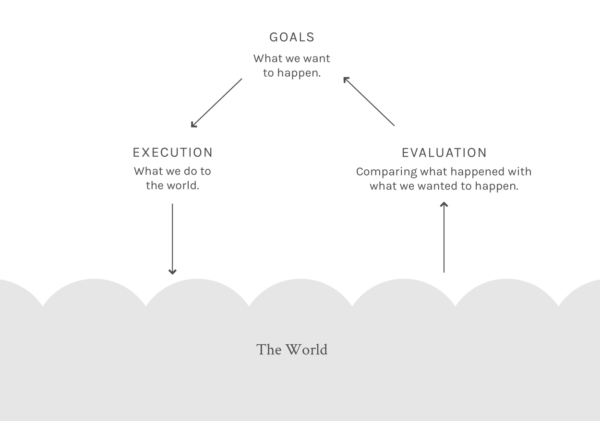The Design of Everyday Things • Don Norman • 1988
On the Gulf of Execution (Affordances and Constraints)
In Short
The Gulf of Execution describes the potential issues that arise from the discrepancy between the user’s intention and the possible actions they can take. Designers can narrow the gap with visible affordances and considered constraints.
In Depth
Once people form goals, Norman’s model of the cycle of human action identifies the next stage as execution. Just as the Gulf of Evaluation identifies the potential difference between the physical state of the world and our perception of it, execution potentially opens a “gulf” for the user.

This time the separation is between a user’s intention from the possible actions they can take with a design. How do we know what actions are possible through the system? How do we perform our desired action? Two of Norman’s key concepts seem particularly relevant to the Gulf of Execution.
Affordances
The term affordance refers to the perceived and actual properties of the thing, primarily those fundamental properties that determine just how the thing could possibly be used… When affordances are taken advantage of, the user knows what to do just by looking: no picture, label, or instruction is required. Complex things may require explanations, but simple things should not. When simple things need pictures, labels, or instructions, the design has failed. (p.9)
Norman is well-known for popularizing the idea of affordances, a concept adapted from psychologist James J. Gibson. There has been some discussion of the differences in how each author defines the term. In any case, the term is now often used (and perhaps overused) among designers as a means of communicating the importance of form in signaling possible interactions.
Constraints
How can design signal the appropriate actions?... One important set of signals comes through the natural constraints of objects, physical constraints that limit what can be done. Another set of signals comes from the affordances of objects, which convey messages about their possible uses, actions, and functions… Affordances suggest the range of possibilities, constraints limit the number of alternatives. (p.82)
Norman offers a categorization of types of constraints that can be built into a design that includes physical constraints (arising from the physical form of the design), semantic constraints (arising from the meaning of the situation of the design), cultural constraints (arising from the cultural conventions of the user), and logical constraints (arising from logical conclusions based on what is observed about the design).